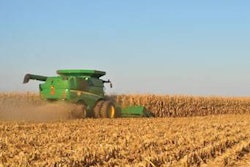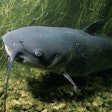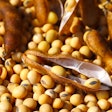Nutriad conducted its Mycotoxin Survey on 78 samples of wheat from all over Poland, and concluded that the country’s crop should not be considered safe for inclusion into finished feed.
More than 460 analyses were conducted to test for the occurrence of the six mycotoxins most frequently found in agricultural commodities intended for animal production. The survey provides an insight into the incidences of aflatoxins (Afla), zearalenone (ZEN), deoxynivalenol (DON), T-2 toxin, fumonisin B1 (FB1) and ochratoxin A (OTA) across all regions of Poland. All analyzed samples were wheat. All samples were collected almost immediately after the harvest and the probability that some storage mycotoxins will have developed (OTA) was low. Wheat samples were sampled directly from farms or animal feed production sites.
The Nutriad wheat mycotoxin survey concludes that this year’s harvest of wheat in Poland is of medium quality in terms of mycotoxin contamination.
Based on the results of this survey conducted immediately after the 2014 harvest Nutriad CEO Erik Visser indicates: “This year’s wheat crop in Poland should not be considered safe for inclusion into finished feed rations for all animal species. According to our experts, special attention should be paid to contamination of wheat by DON and ZEN and appropriate measures taken to mitigate against the effects of their presence in animal feeds.”
All six mycotoxins were analyzed by liquid chromatography tandem mass spectrometry (LC MS/MS). For the purpose of data analysis, non-detection levels were based on the limits of quantification (LOQ) of the test method for each mycotoxin: AfB1 < 0.5 μg/kg; ZEN < 10 μg/kg; DON < 75 μg/kg; FB1 < 125 μg/kg; OTA < 1 μg/kg and T-2 toxin < 4 μg/kg.
The results show that 62 percent of wheat samples were contaminated with DON and none of the samples contained AfB1 and fumonisin B1. Only 3 percent of samples contained OTA but this result was expected as it is well known that OTA is a typical storage mycotoxin. The average concentrations of all recovered mycotoxins were medium while the highest concentration of DON found in one of the samples reached 2500 μg/kg. Although 8 percent of the samples contained T-2 toxin, a mycotoxin extremely toxic for poultry, its maximum concentration reached only 33 μg/kg and this level is negligible. Of more interest was contamination by zearalenone; only 10 percent of samples were contaminated but the highest analyzed concentration was 250 μg/kg. The average ZEN contamination was 94 μg/kg and this level can be considered low for most animal species.
















